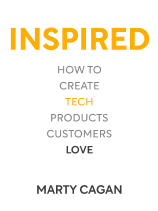

This article is an excerpt from the Shortform book guide to "Inspired" by Marty Cagan. Shortform has the world's best summaries and analyses of books you should be reading.
Like this article? Sign up for a free trial here .
What are the four types of prototypes? Why is prototyping a necessary part of the product development process?
The four types of prototypes are the feasibility prototype, user prototypes, live-data prototypes, and hybrid prototypes. Each one serves a specific purpose and which one you use depends on the product you are developing.
Here is an explanation of each one.
Prototyping Your Product
The next step in the discovery process after generating ideas is prototyping. People often think of prototypes as nearly complete products, but less elaborate prototypes are more useful and less expensive to produce.
While prototypes do take much less time, money, and energy than the final product to create, they still force teams to take the ideas in their heads and put them to work. They are a good balance between putting too much effort and too little effort into an idea.
This section discusses four types of prototypes.
1. Feasibility Prototypes
Sometimes engineers aren’t sure whether they can build a tech product—for instance, because of concerns like scale or whether it is possible to successfully code the version of the product they have in mind. The way to answer the question is to build a feasibility prototype.
In creating a feasibility prototype, engineers typically write just enough code for the project to know that they can complete it. The code doesn’t need to be perfect—it’s unlikely that it will go into the final build.
The feasibility prototype is done by the engineers and is for the engineers. The product manager needs to concern herself with it only insofar as she ultimately decides whether to move forward with it.
2. User Prototypes
While feasibility prototypes involve writing a minimal amount of working code, user prototypes are simulations of the final product. They’re not actually functional—for example, a customer wouldn’t be able to buy anything via a user prototype for an online marketplace like eBay.
The simplest user prototypes often don’t look anything like the final product and serve only as the skeleton. Generally, simple user prototypes are for internal use only—to help the team visualize the product.
In contrast, more complex user prototypes called high-fidelity user prototypes look and feel like the final product. They take longer to create, and they can be used both internally and externally on test subjects. However, high-fidelity user prototypes aren’t live, and can still be fairly basic—for example, a search function might generate only a few results, or an algorithm might still need building.
3. Live-Data Prototypes
A company pursuing a risky idea can get real data on whether a product will sell while in the discovery phase by creating a live-data prototype.
This prototype is a pared-down version of the final product—it’s not scalable, can’t take much traffic, and doesn’t have any SEO or analytics associated with it, but it does function. Test users can use the product and provide qualitative data on how they felt and quantitative data on how they used it and how well it worked.
Remember though, that at this point, the product still has a long way to go—the engineers have likely done less than 10% of the work needed for success.
4. Hybrid Prototypes
The final prototype is the hybrid, which is a combination of the first three types. A “Wizard of Oz” prototype is an example of a hybrid prototype—the name comes from what’s behind the curtain. Behind the product’s front-end user experience, an engineer manually performs the tasks that the front-end says the product can do. This saves time on automation, and can provide a sense of what people think of the product.
Most hybrid prototypes are the least scalable of the four types, as they’re meant to be built quickly and provide customer feedback without requiring unnecessary engineering work.

———End of Preview———
Like what you just read? Read the rest of the world's best book summary and analysis of Marty Cagan's "Inspired" at Shortform .
Here's what you'll find in our full Inspired summary :
- A two-step plan for creating and sustaining successful technology products
- Why product managers are so important in product development
- How to avoid some of the biggest pitfalls that most tech companies fall into






